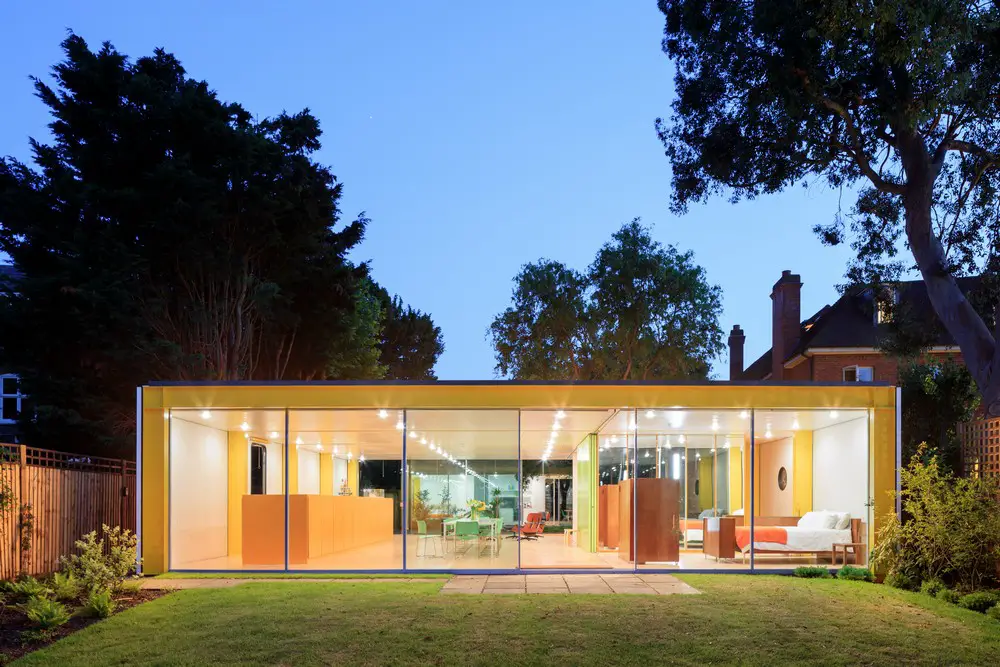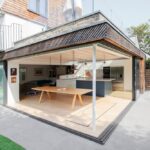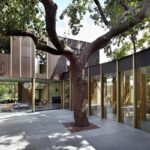Richard Rogers’s Wimbledon House London, 22 Parkside Residence, Home Design, News
Richard Rogers’s Wimbledon House
Harvard Graduate School of Design (GSD) in England, UK Architect’s Residence: Winners
6 Jan 2018
Harvard GSD’s 2018 Richard Rogers Fellowship Winners
Winners of Harvard GSD’s 2018 Richard Rogers Fellowships
2018 RICHARD ROGERS FELLOWSHIP WINNERS
Harvard GSD announces winners of 2018 Richard Rogers Fellowship, the Wimbledon House’s residency program for architectural and urban.
Cambridge, MA — Harvard Graduate School of Design (GSD) is pleased to announce the six winners of the 2018 Richard Rogers Fellowship, a residency program at the Wimbledon House, the landmarked residence designed by Lord Richard Rogers for his parents in the late 1960s.
Now entering its second cycle, the Fellowship is inspired by Lord Rogers’s commitment to cross-disciplinary investigation and engagement, evident across his prolific output as an architect, urbanist, author, and activist. Harvard GSD introduced the Fellowship in October 2016, and named its inaugural class of fellows in February 2017. Learn more about the inaugural class of Richard Rogers Fellows at RichardRogersFellowship.org.
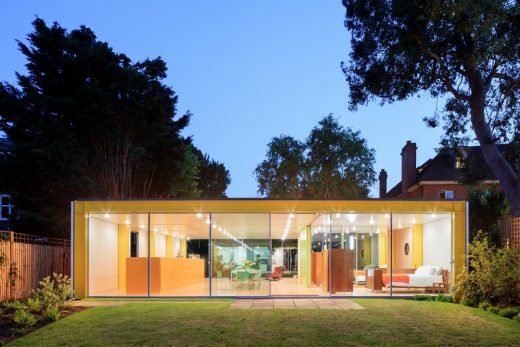
Richard Rogers’s Wimbledon House. Photograph by Iwan Baan. Courtesy of the Harvard Graduate School of Design
“From property guardianship to large-scale prototyping of urban environments, the diversity of subjects taken up by the 2018 cohort of fellows is extraordinary, and the way they propose to engage their projects with London is very exciting to see,” says Mohsen Mostafavi, Dean of Harvard GSD and member of the Fellowship Selection Committee. “We look forward to the second year of this important program, and are eager to witness the consequences of this research.”
The 2018 Richard Rogers Fellows hail from Switzerland, Japan, Australia, and the United States. The 2018 Fellowship Selection Committee includes: Richard Burdett, K. Michael Hays, Hanif Kara, Mohsen Mostafavi, Farshid Moussavi, Patricia Roberts, and Lord Richard Rogers. (Full juror biographies appear on the website RichardRogersFellowship.org.) In addition to a three-month residency, Richard Rogers Fellows receive travel expenses to London and a $10,000 cash purse. The 2019 Richard Rogers Fellowship cycle will begin accepting applications in October 2018.
2018 RICHARD ROGERS FELLOWS
Irina Davidovici (Zurich, Switzerland)
Peter Buš (Zurich, Switzerland)
Summer Fellows
Aleksandr Bierig (Cambridge, US)
Alexis Kalagas (Zurich, Switzerland)
Fall Fellows
Kaz Yoneda (Tokyo, Japan)
Cathy Smith (Newcastle, Australia)
1 Nov 2017
Harvard GSD’s 2018 Richard Rogers Fellowship Application
Harvard GSD’s 2018 Richard Rogers Fellowship Application Closes November 14, 2017
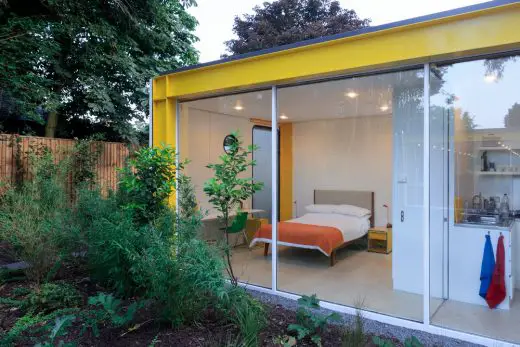
Richard Rogers’s Wimbledon House in London. Photograph by Iwan Baan, Courtesy of the Harvard Graduate School of Design
October 31, 2017, Cambridge, MA: The application cycle for the 2018 Harvard Graduate School of Design’s Richard Rogers Fellowship will close on Tuesday, November 14, with the winners being announced in December 2017.
The Richard Rogers Fellowship is a residency program based at the Wimbledon House, which was designed by Lord Rogers in the late 1960s.
The London-based Fellowship is intended to encourage in-depth, original forms of investigation as a way to expand both practice and scholarship. Open to accomplished practitioners and scholars working in fields related to the built environment, the Fellowship seeks research proposals focused on those topics that have been central to Lord Rogers’s life and career, including questions of urbanism, sustainability, and how people use cities. The Fellowship is inspired by Lord Rogers’s commitment to crossdisciplinary investigation and engagement, evident across his prolific output as an architect, urbanist, author, and activist.
Each of the six selected fellows receives a three-month residency at the Wimbledon House in London, as well as round-trip travel expenses, a 10,000 USD cash stipend, and unique access to London’s extraordinary institutions, libraries, practices, professionals, and other resources.
The fellowship’s inaugural six fellows, drawn from a pool of more than 200 applicants, have applied their 2017 residencies toward investigation of a diverse series of topics, including examinations of public and affordable housing; how food and cooking transform cities; and citizen-driven urban regeneration initiatives. The GSD celebrated the Fellowship alongside Lord Richard and Lady Ruth Rogers with an event at the Wimbledon House in June 2017. The GSD aims to further activate the house and fellowship as platforms for ongoing dialogue and exchange.
In 2015, Lord Richard and Lady Ruth Rogers generously gifted the Wimbledon House—designed by Rogers for his parents in the late 1960s—to Harvard GSD to ensure the Heritage-listed property’s continued use as a residence and to provide a unique research opportunity for future generations of professionals and scholars.
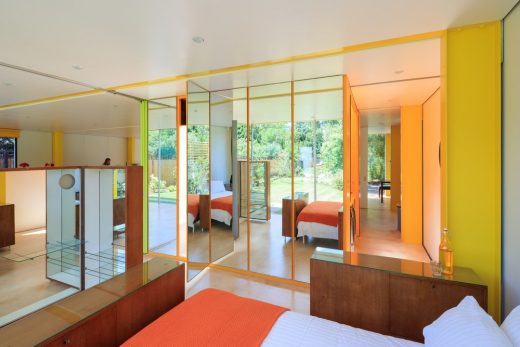
The restored furniture with furniture by Ernesto Rogers. Photograph by Iwan Baan – Courtesy of the Harvard Graduate School of Design
The Fellowship is open to applicants residing anywhere in the world. Applicants must demonstrate professional or research experience in a field related to the built environment, and must propose new or ongoing research that would benefit from a residency in London. Applicants must have completed a graduate or professionally accredited degree. Preference is given to practitioners and researchers with significant academic credentials or experience in architecture, landscape architecture, urban planning or urban design, as well as applicants who propose ambitious research projects with the potential to make a significant impact on relevant fields of research or practice. Winners are expected to secure their own travel + visitor’s documents (UK requirements differ depending on the country of origin and length of stay).
The Fellowship Selection Committee includes: Richard Burdett, K. Michael Hays, Hanif Kara, Mohsen Mostafavi, Farshid Moussavi, Patricia Roberts, and Lord Richard Rogers.
Interested parties may apply at www.richardrogersfellowship.org. Candidates will be asked to submit a CV, portfolio of design work and/or research work, and research proposal.
27 Jun 2017
Richard Rogers’s Wimbledon House, London
Restoration: architect Philip Gumuchdjian and landscape architect Todd Longstaffe-Gowan
Wimbledon House by Richard Rogers – 22 Parkside
HARVARD GRADUATE SCHOOL OF DESIGN (GSD) DEBUTS RICHARD ROGERS’S WIMBLEDON HOUSE ON JUNE 27 FOR THE FIRST TIME SINCE UNDERGOING RENOVATIONS MANAGED BY ARCHITECT PHILIP GUMUCHDJIAN
The Wimbledon House will be the flagship location for the first class of GSD’s Richard Rogers fellows, and for GSD’s London- and internationally based architectural and urban research.
June 27, London, UK – Today, the Harvard Graduate School of Design (GSD) premieres Richard Rogers’s Wimbledon House in London for the first time since restorations by British architect Philip Gumuchdjian and landscape architect Todd Longstaffe-Gowan began in 2015.
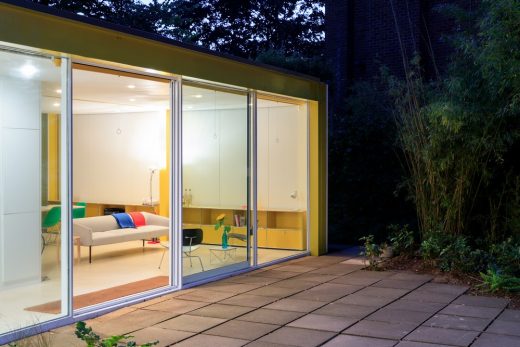
Richard Rogers’s Wimbledon House. Saari Sofa, designed by Lievore Altherr Molina, kindly donated by Arper. Photo by Iwan Baan. Courtesy of the Harvard Graduate School of Design
The House, designed by Lord Rogers for his parents in the late 1960s, was gifted to Harvard GSD in 2015 by Lord Rogers and Ruth Rogers to ensure the Heritage-listed property’s continued use as a residence, and to provide a unique research opportunity for future generations of architecture professionals and scholars —from across fields and disciplines—whose work is focused on the built environment.
As such, the Wimbledon House will serve as the residence for the Richard Rogers Fellowship, as well as a new GSD venue for lectures, symposia, and other events bringing together scholars and practitioners from London, across Europe, and around the world. The first class of fellows has taken residence at the House and commenced research; they hail from Austria, Mexico, the Netherlands, Norway, and the United States, and were chosen from more than 200 applicants. Public programming at the House will begin this fall with a conversation themed around the topic of food and the city.
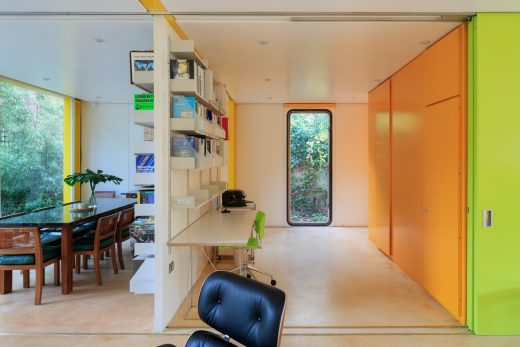
Partitions slid open to reveal Library and admin space. Picture by Iwan Baan. Courtesy of the Harvard Graduate School of Design
Commenting on the renovations to the House, also known as 22 Parkside, Philip Gumuchdjian, Founding Director of Gumuchdjian Architects, said, “Parkside is not just an iconic, flexible machine for living, nor simply a historic experimental building that foretold the architect’s future work; it was also a home with a unique memory, patina, and aura. Conserving these qualities within a wholly refurbished twenty-first-century building tailored to Harvard’s new use was our aim and hopefully the achievement of the team’s work.” Todd Longstaffe-Gowan, founding Director of Todd Longstaffe-Gowan Landscape Design, notes “Parkside is a total work of art, where the house, gardens, and interiors were conceived in concert to form a unified whole.

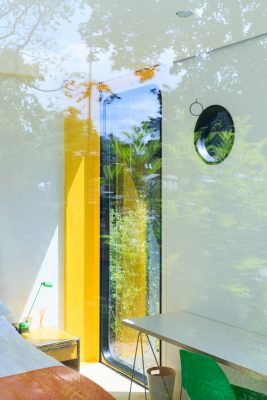
Richard Rogers’s Wimbledon House. Image by Iwan Baan. Courtesy of the Harvard Graduate School of Design
The alternating rhythm of pavilions and garden courts contribute considerably to the striking theatricality and luminosity of the ensemble; the outdoor rooms are at once boundless and enveloping. Our aim has been to restore the original balance of the 1960s composition to better reflect the architect’s original intentions, and to recover the richness, rhythm, and textures of the landscape that give Parkside its particular charm.”
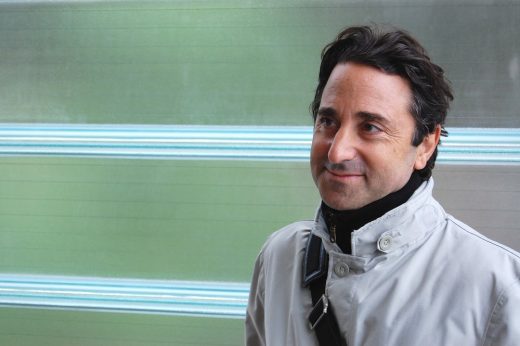
Philip Gumuchdjian, photo : Paul Kerley
Located near some of the world’s finest resources for research in urbanism, the Richard Rogers Fellowship program represents both an international extension of the GSD’s physical footprint and the School’s commitment to engaging issues faced by cities globally. We are thrilled with the gift of the Wimbledon House and know that it will serve as the foundation for meaningful progress in addressing international urban issues.
—Mohsen Mostafavi Dean and Alexander and Victoria Wiley Professor of Design, Harvard Graduate School of Design
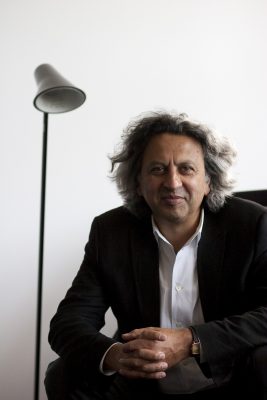
Mohsen Mostafavi, photo : Stephanie Mitchell
ABOUT THE RICHARD ROGERS FELLOWSHIP
The Richard Rogers Fellowship, launched in October 2016, is inspired by Lord Rogers’s commitment to cross-disciplinary investigation and social engagement, evident across his prolific output as an architect, urbanist, author, and activist. Each year, six fellows will be awarded a three-month residency, travel expenses to London, and a $10,000 USD cash prize, affording them access to London’s extraordinary institutions, libraries, practices, professionals, and other resources.
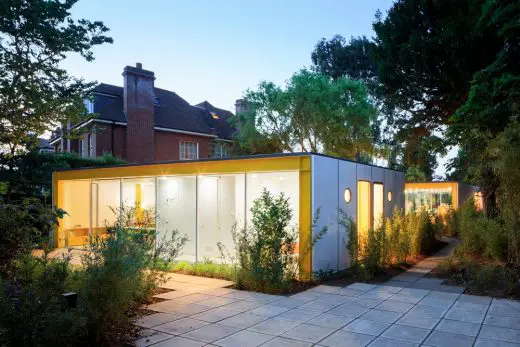
Richard Rogers’s Wimbledon House. Photo : Iwan Baan, Courtesy of the Harvard Graduate School of Design
The goal of the residency program is to support research that addresses alternative and sustainable urban futures. The Richard Rogers Fellowship is an open international competition that encourages in-depth, original forms of investigation as a way to expand both practice and scholarship.
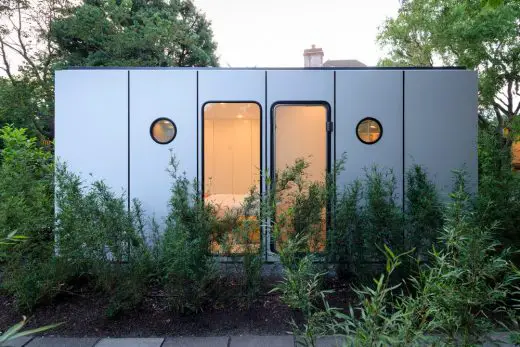
Richard Rogers’s Wimbledon House. Photograph : Iwan Baan, Courtesy of the Harvard Graduate School of Design
Projects that the six inaugural fellows will bring to the House in 2017 include examinations of public and affordable housing; how food and cooking transform cities; and citizen-driven urban regeneration initiatives, particularly in London and Berlin. Interested applicants from any field or background are encouraged to apply for the fellowship during the next application cycle, which will open in Fall 2017.
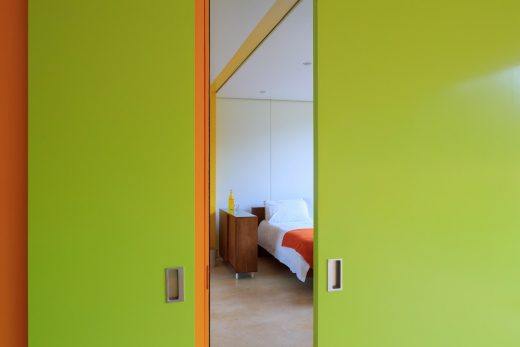
Richard Rogers’s Wimbledon House. Picture : Iwan Baan. Courtesy of the Harvard Graduate School of Design
The 2017 Fellowship Selection Committee comprises Richard Burdett, Professor of Urban Studies at London School of Economics and Director of LSE Cities and the Urban Age program; Ivan Harbour, architect and Senior Partner at Rogers Stirk Harbour + Partners; K. Michael Hays, Eliot Noyes Professor of Architectural Theory, Associate Dean for Academic Affairs, and Interim Chair of the Department of Architecture at Harvard GSD; Hanif Kara, Professor in Practice of Architectural Technology at Harvard GSD; Mohsen Mostafavi, Dean and Alexander and Victoria Wiley Professor of Design at Harvard GSD; Farshid Moussavi, Professor in Practice of Architecture at Harvard GSD; Patricia Roberts, Executive Dean at Harvard GSD; and Lord Rogers.
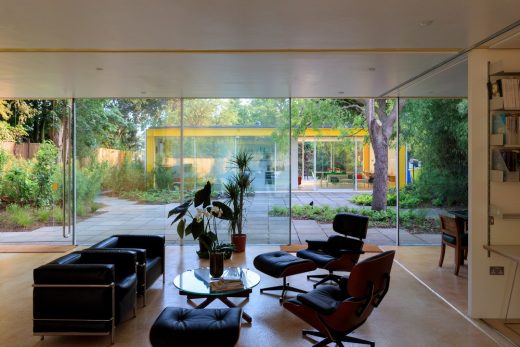
Richard Rogers’s Wimbledon House. Image : Iwan Baan. Courtesy of the Harvard Graduate School of Design
ABOUT THE HARVARD GRADUATE SCHOOL OF DESIGN
The Harvard University Graduate School of Design is dedicated to the education and development of design professionals in architecture, landscape architecture, urban planning, and urban design. With a commitment to design excellence that demands the skillful manipulation of form and technology and draws inspiration from a broad range of social, environmental, and cultural issues, the Graduate School of Design provides leadership for shaping the built environment of the 21st century. For more information about Harvard GSD, see: www.gsd.harvard.edu.
4Harvard Graduate School of Design
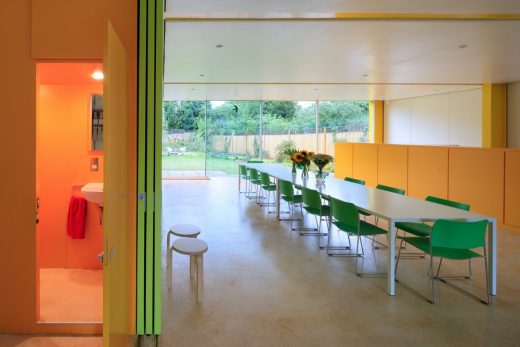
Richard Rogers’s Wimbledon House. Photograph taken by Iwan Baan
ABOUT PHILIP GUMUCHDJIAN, FOUNDING DIRECTOR, GUMUCHDJIAN ARCHITECTS
Philip spent the first eighteen years of his career at Richard Rogers Partnership where he was Associate Director. In 1998, he set up Gumuchdjian Architects. The practice’s work – over nearly two decades – includes the Marylebone Performing Arts Centre in London, the Think Tank in Ireland, the Hauser & Wirth gallery in Piccadilly, the Butler Family museum in Dorset, the Giant Recycled Paper Building in the Millennium Dome (O2 Arena), and the Hopton Street Tower next to Tate Modern, London, as well as a wide range of residential projects. The practice has also worked on a number of highprofile historic buildings, including projects originally designed by Wells Coates, Sir Edwin Lutyens, and Sir William Chambers.
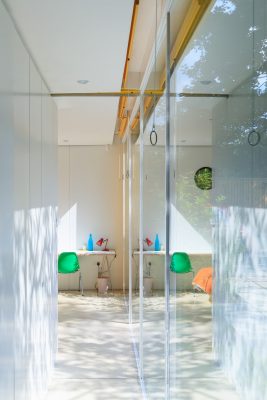
Richard Rogers’s Wimbledon House. Photo taken by Iwan Baan
Together with Shigeru Ban, Gumuchdjian Architects won the prestigious international competition to design the new Centre Pompidou-Metz. The project to redesign 22 Parkside, Wimbledon – the London house originally conceived by Richard Rogers for his parents in the late 1960s – was completed in mid-2017. Gumuchdjian Architects has received numerous industry and Royal Institute of British Architects (RIBA) awards, including two RIBA Stephen Lawrence Prizes, for the Think Tank (2003) and the Artists’ House (2010).
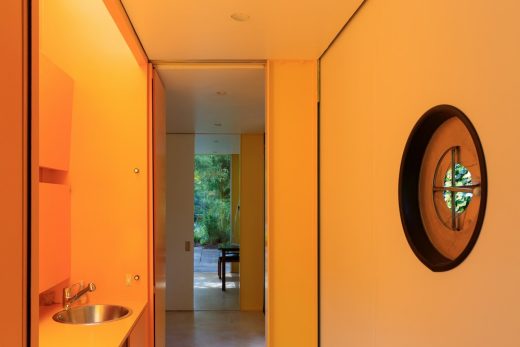
Richard Rogers’s Wimbledon House. Photograph by Iwan Baan
Philip co-authored Richard Rogers’s Cities for a Small Planet (1997), has served as a member of the German government’s “Urban 21” panel, and taught urban design at the UCL Bartlett School of Architecture, London. He was elected to the RIBA Awards board in 2012, serving as its Chair between 2014 and 2016. He was a committee member of the first RIBA Awards for International Excellence.
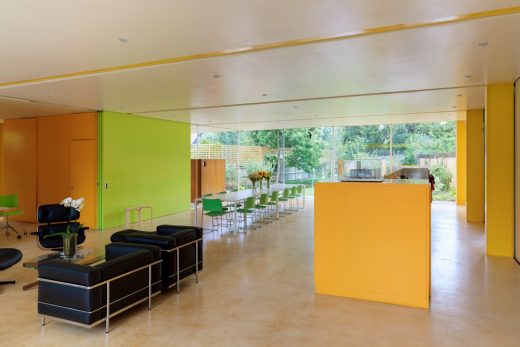
Richard Rogers’s Wimbledon House. Picture taken by Iwan Baan
Further comments by Mohsen Mostafavi:
“Richard understands that the sort of experimentation and discovery needed to improve our cities and our quality of life depends on new modes of research that enable cross-disciplinary exchange and that ultimately result in the production of new forms of knowledge. In its inaugural year, the Richard Rogers Fellowship has demonstrated the potential for this model of research to achieve new discoveries around urgent issues that cities are facing globally—topics that include migration, housing, food economies, and the mounting pressures of climate change and social inequality.”
“Richard has long been committed to many of the challenges cities around the world are confronted with today—questions of sustainability, energy, and social equity, among others. As the Harvard Graduate School of Design deepens its own commitment to engaging these issues, the Wimbledon House represents an opportunity to define new modes of inquiry and discovery across disciplines. In gifting the Wimbledon House to the School, Richard and Ruthie express great confidence in the GSD’s ambitions to carry forward this work in an international context. We are humbled by and grateful for their extraordinary generosity.”
“We look forward to establishing the Wimbledon House as the centerpiece of a series of international initiatives focused on the built environment, and we are especially grateful for the involvement and commitment of Richard to engage with our students, fellows, and other members of the GSD community.”
—Mohsen Mostafavi Dean and Alexander and Victoria Wiley Professor of Design, Harvard Graduate School of Design
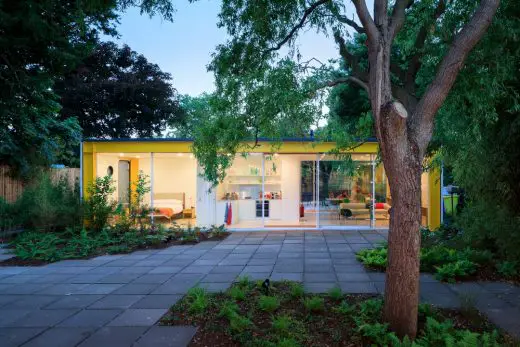
Richard Rogers’s Wimbledon House. Image taken by Iwan Baan
Further comments by Philip Gumuchdjian:
Reinventing the future of 22 Parkside (‘Wimbledon House’)
Philip Gumuchdjian/Founding Director:
“I have known 22 Parkside since 1980 when – as an apprentice to the former Richard Rogers Partnership – I was given the task of replacing the iconic yellow blinds. I recall it as a place full of serenity and aesthetic harmony, a place of sunlight and of views into landscape. The house contained an overarching sense of a freedom of spirit that was generated by the radical flexibility of its interior and the flow of space though structures and landscape.
“Parkside was both a spectacular utopian prototype and a home in which a continental modernist serenity touched every corner. This machine for living, a blueprint for industrialised mass-produced housing, also achieved – through the intervention of its original residents, Richard’s parents, Dada and Nino Rogers – an intense poetic and emotional resonance.
“Gumuchdjian Architects’ proposition to Harvard was to return the house to its original condition, albeit modified to their specific needs. As ever, the success of the project was entirely supported by the vision and sensitivity of the new client. Our seemingly simple proposition tempered by the wish to exploit the advantages of modern materials, resulted in the replacement of the entire roof and all of its asbestos-filled external walls, the demolition of recently added buildings, the removal of new internal partitions, the replacement of its servicing system, the refurbishment and redecoration of the joinery and the reconstruction of the garden in its entirety.
“The house was conceived as a kit of parts in an age before such concepts were commonplace and the process of ‘opening up’ with the revelation of all its technical flaws demonstrated just how bold and experimental the building was.
“Parkside is not just an iconic, flexible machine for living nor simply a historic experimental building that foretold the architect’s future work; it was also a home with a unique memory, patina and aura. Conserving these qualities within a wholly-refurbished twenty-first century building tailored to Harvard’s new use was our aim and hopefully the achievement of the team’s work.”
TEAM Architects: Gumuchdjian Architects Landscape: Todd Longstaffe Gowan Services engineering: Atelier 10/Patrick Bellew (competition); Aecom, Northern Ireland (implementation) Structural engineering: Techniker (Matthew Wells)
Comment from landscape architect Todd Longstaffe-Gowan:
“Parkside is a total work of art, where the house, gardens and interiors were conceived in concert to form a unified whole. The alternating rhythm of pavilions and garden courts contribute considerably to the striking theatricality and luminosity of the ensemble; the outdoor rooms are at once boundless and enveloping. Our aim has been to restore the balance of the 1960s composition to better reflect the architect’s original intentions, and to recover the richness, flow and textures of the landscape that give Parkside its particular charm.”
– Todd Longstaffe-Gowan, founding Director of Todd Longstaffe-Gowan Landscape Design, Landscape architect for Richard Rogers’ Wimbledon House (also known as 22 Parkside)
Richard Rogers’s Wimbledon House, London images / information received 270617
All images are Courtesy of the Harvard Graduate School of Design
Location: Wimbledon, Southwest London, England, UK
London Building Designs
Contemporary London Architectural Designs
London Architecture Links – chronological list
London Architecture Tours – bespoke UK capital city walks by e-architect
Harvard University Science and Engineering Complex, Allston, Massachusetts, USA
Design: Behnisch Architekten
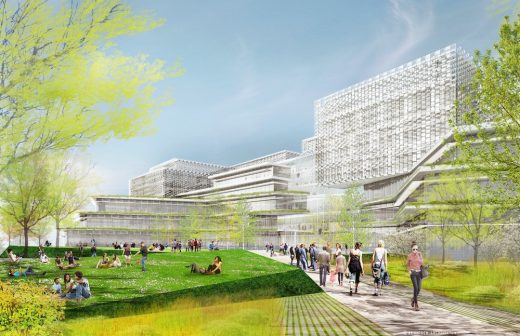
image courtesy of architects
Harvard University Science and Engineering Complex
Harvard Art Museums, Boston
Design: Renzo Piano Building Workshop
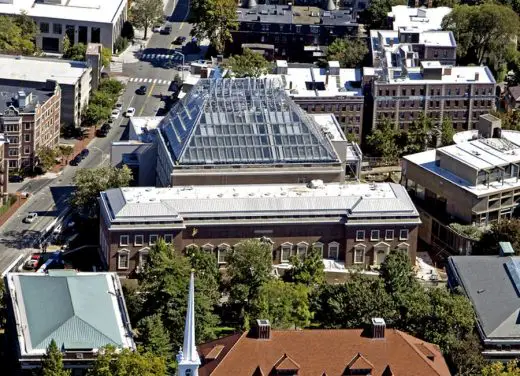
photograph Courtesy of the Harvard Art Museum ; photographer : Les Vants
Harvard Art Museums Building
‘Motion Matters’ at Harvard University
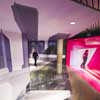
photo : Justin Knight
Motion Matters, Harvard University Exhibition, UNStudio USA: Ben van Berkel Exhibition
Wimbledon Buildings
Design: Grimshaw
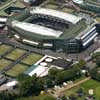
image : All England Lawn Tennis Club
Wimbledon Tennis Club Building
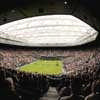
photograph : AELTC
Wimbledon Centre Court Roof
Website: Harvard Graduate School of Design
Wimbledon Tennis Club Masterplan design : Grimshaw
Wimbledon Centre Court Retractable Roof architect : Populous
Wimbledon Retractable Roof architect : HOK Sport
Comments / photos for the Richard Rogers’s Wimbledon House, London page welcome
Website: Wimbledon London

